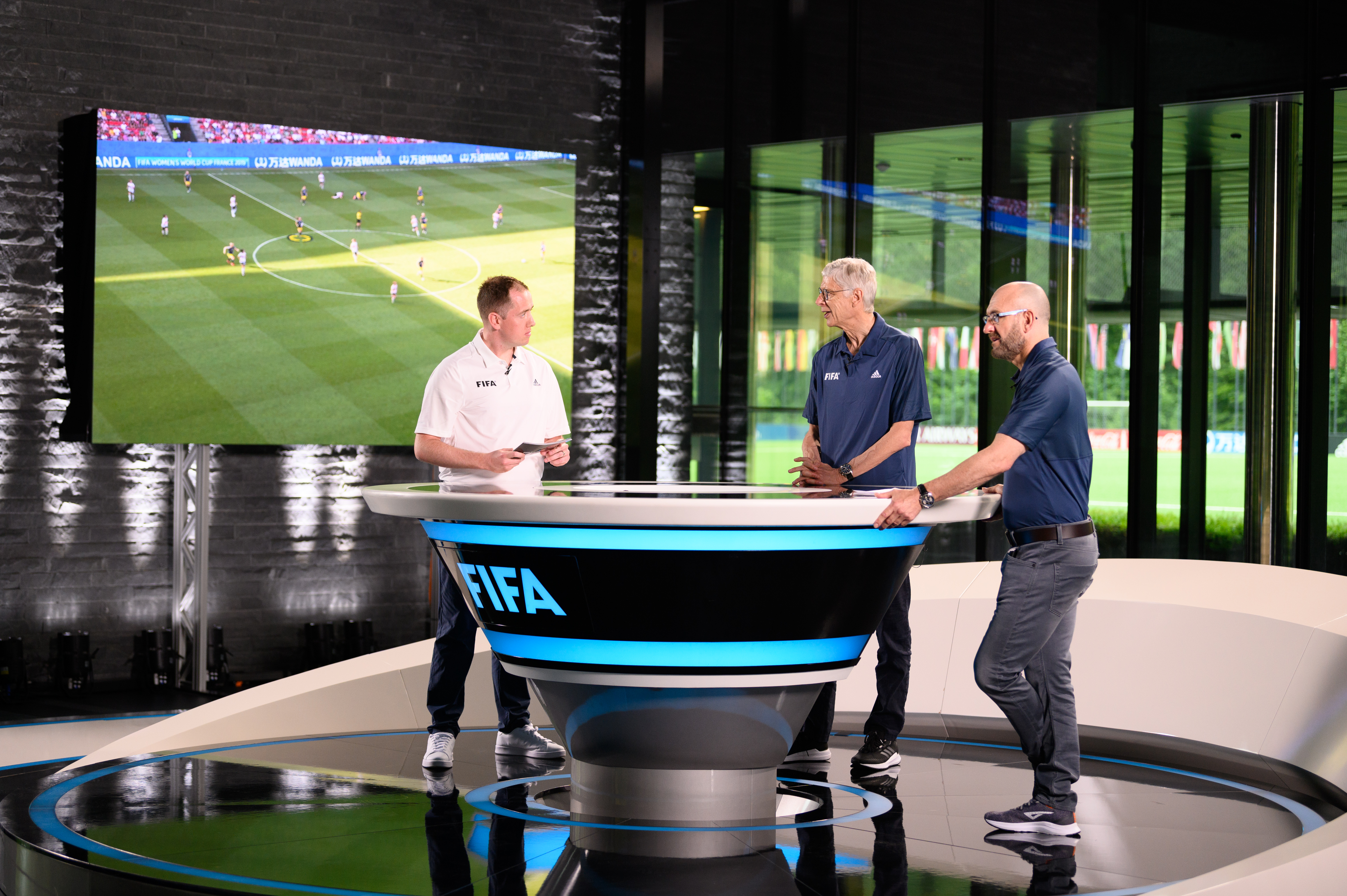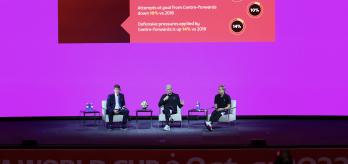The group stage of the FIFA World Cup delivers a high volume of football within a short period of time. Now that the 48 group games have been completed, the Technical Study Group (TSG) have had a chance to compile their observations, empirically grounded in FIFA's Enhanced Football Intelligence metrics, and to reveal some of the tournament's emerging technical trends. Here, Wenger and the team touch on topics including the unique circumstances of playing in FIFA World Cup Qatar 2022™ and how the game has developed in comparison to FIFA World Cup Russia 2018™, especially when it comes to play inside the final third and the ongoing transformation of the goalkeeper role.
Watch video
Read summary
03:50
General characteristics of the group stage
FIFA's Global Head of Football Development Arsène Wenger begins by setting out some of the overarching trends the Technical Study Group observed during the group stage. Noting that no team managed to win all three group games, he goes on to discuss some key statistics from the group stage, including the slight decline in the number of shots on goal, and the tendency for players to shoot at closer range than they have done previously. Nevertheless, efficiency in front of goal remains key: the lack of it explains Germany's absence from the knockout phase.
12:32
The importance of wide areas
Perhaps the most intriguing feature of this tournament so far has been the way the main point of attack has shifted from the heavily defended central areas of the pitch to the flanks. Goals from open-play crosses are up 83% in Qatar compared to FIFA World Cup 2018, a statistic that leads Wenger to predict that the team with the best wide players could well be the side to emerge as World Champions in a fortnight's time. This shift to the wide areas can be seen as a response to the increasing use of multiple defensive midfielders to block off the central areas of the pitch, as we saw in the second episode of FIFA Insight.
16:48
Play in possession
The panel then move on to examine other major characteristics of attacking play in greater detail, and uncover some striking developments. For example, the number of take-ons (players taking on defenders 1v1) is down by 33% at this tournament compared to Russia 2018. Moreover, teams from CONMEBOL seem to be more willing to engage the opposition 1v1 than their European counterparts, which raises questions about the attacking philosophies favoured in different parts of the world. On the other hand, receptions of the ball behind the midfield line have remained stable compared to four years ago. This stasis may be connected with the rise of zonal marking, which arguably discourages movement off the ball.
21:45
Play out of possession
Having covered some key features of the attacking play seen thus far in this tournament, the panel move on to consider how teams are defending. Perhaps surprisingly, given how fashionable the high press has become, we have not seen a huge rise in pressing incidents or teams pushing onto the opposition to stop them passing the ball. More significantly, the statistics do not show a correlation between pressing and results; of the teams representing CONMEBOL at this tournament, for instance, the teams that qualified for the second round (Brazil and Argentina) pressed less than those who did not (Ecuador and Uruguay).
23:18
Ball recovery time
These surprising results also feed into the statistics showing how long defending teams take to recover the ball. If we break this statistic down by confederation, there does not appear to be a clear link between winning the ball back quickly and winning matches. The numbers certainly provide food for thought but, as Jürgen Klinsmann points out, the numbers do not tell the whole truth, since the defensive strategies of individual teams vary markedly within confederations and are tailored to the specific circumstances of individual matches.
25:18
The evolution of the goalkeeper
Of all the positions on the pitch, it is that of the goalkeeper that has perhaps undergone most change in recent years, and this evolution has continued in Qatar. The statistics show a huge increase in the number of times goalkeepers have offered to receive the ball, reflecting the fact the goalkeeper is increasingly treated as an eleventh outfield player, acting as the focal point for deep build-up play. Indeed, there may even be an argument for making goalkeepers play as outfielders as they rise through the ranks to make sure their distribution is up to scratch.
Key findings of the group stage
-
Teams are looking to block off the centre of the pitch, forcing the opposition to attack from out wide.
-
With this in mind, the winners of this FIFA World Cup will probably have some outstanding wide players.
-
Goalkeepers are increasingly acting as an extra outfielder, and need to train accordingly.














